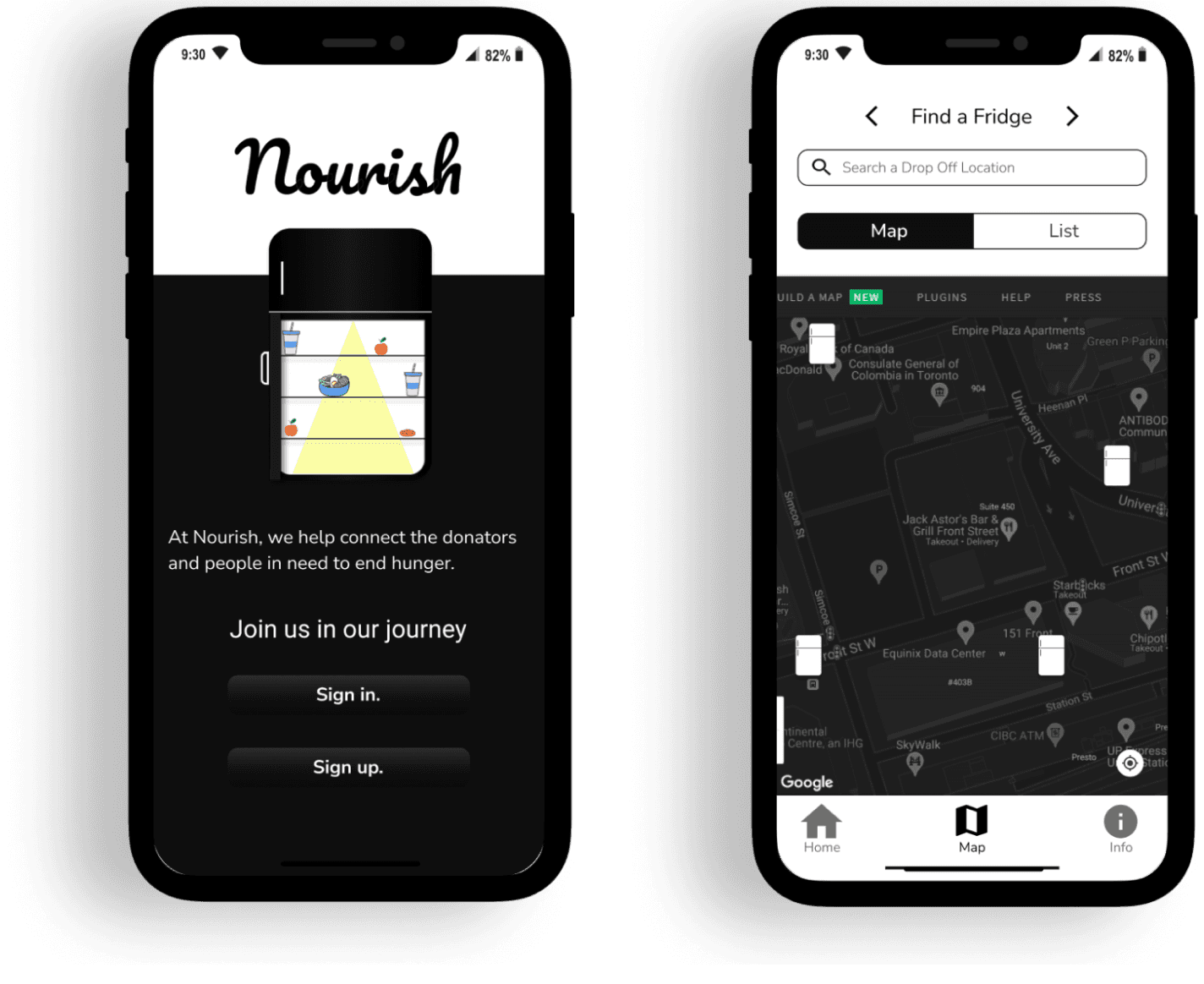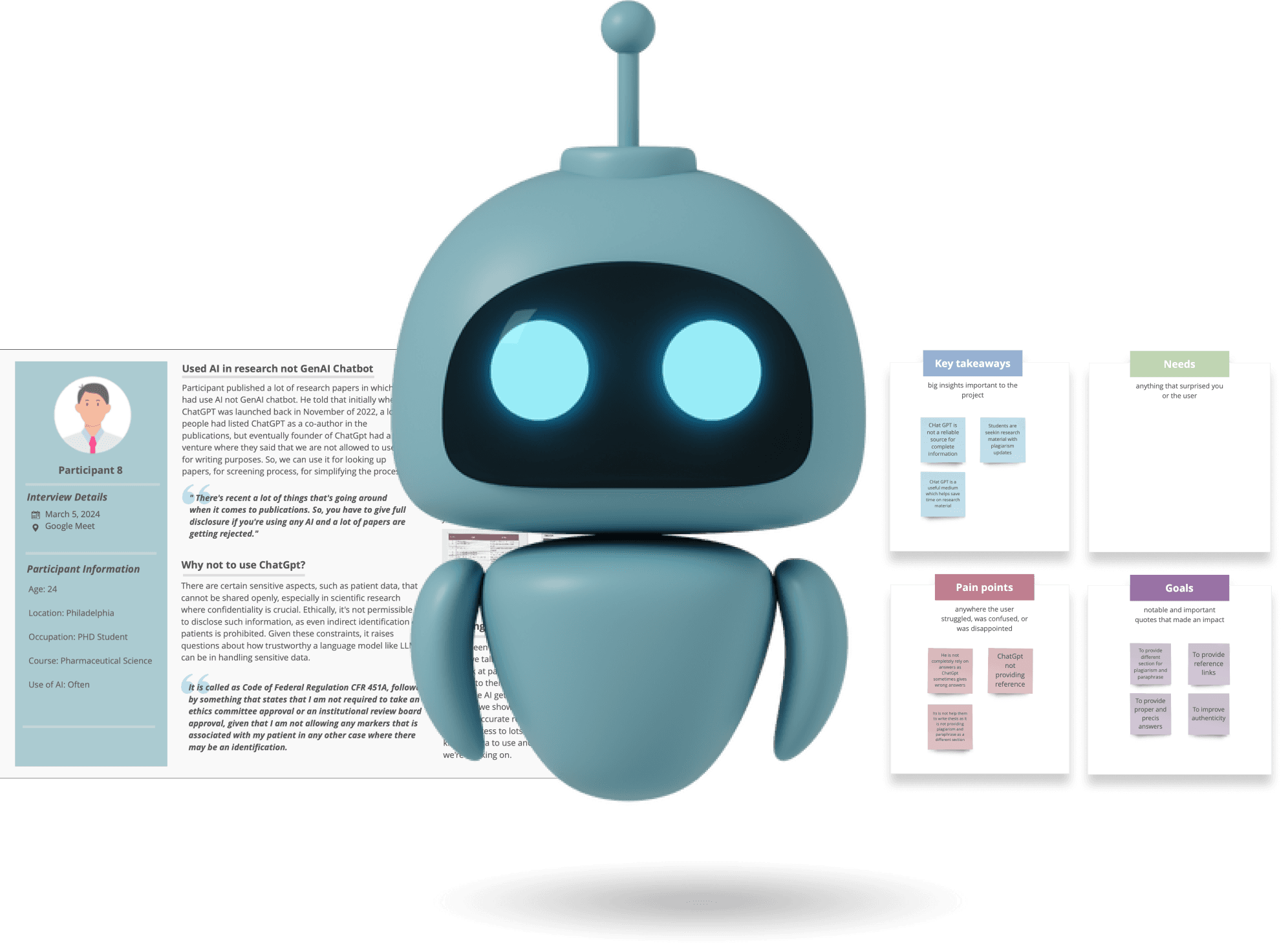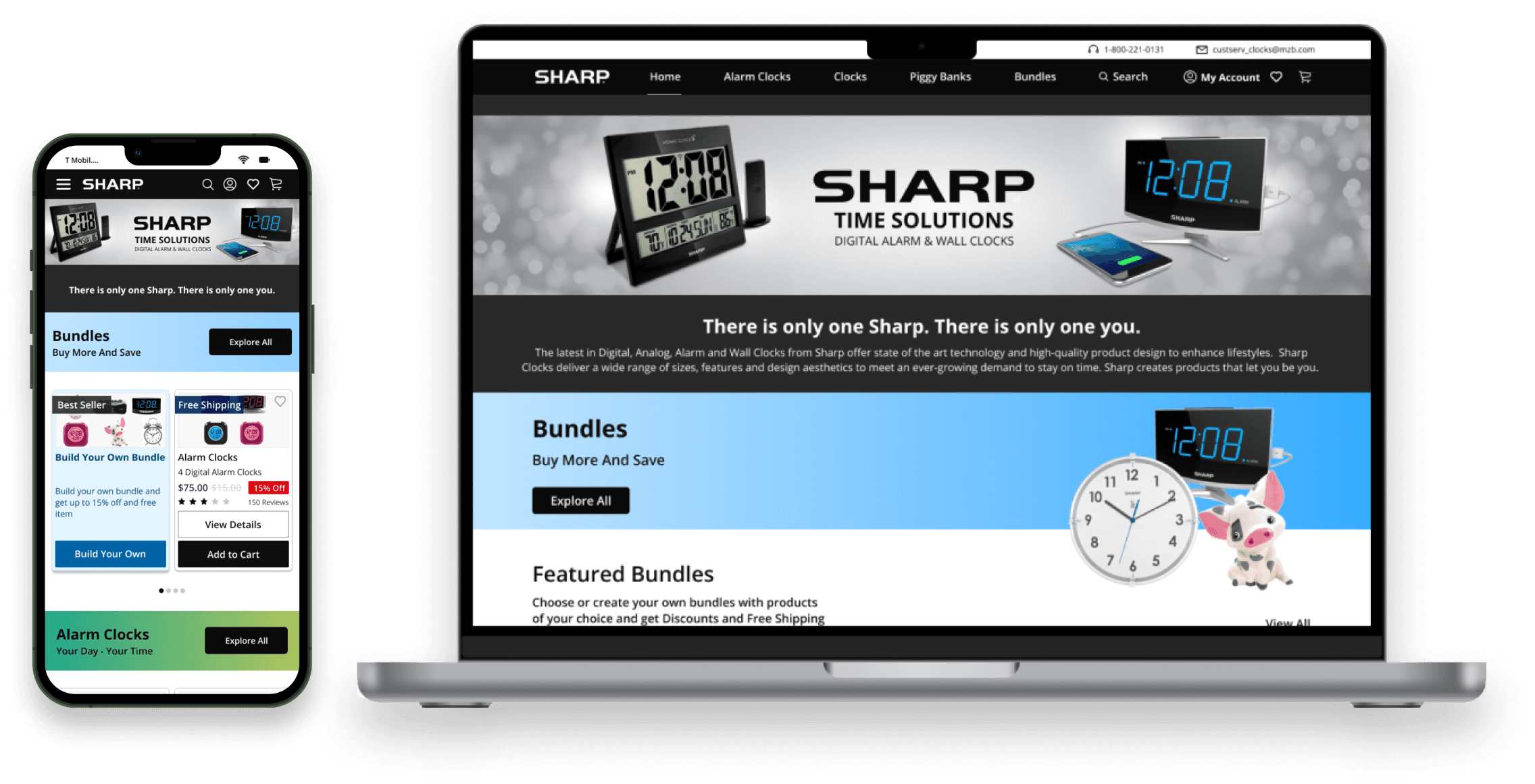© 2024 Designed By Vishal Thakkar

Let’s Connect 🙂
Interested in working together or looking to chat over coffee? Shoot me a message and let’s talk!
Open to relocation | Hybrid | Remote

Let’s Connect 🙂
Interested in working together or looking to chat over coffee? Shoot me a message and let’s talk!
Open to relocation | Hybrid | Remote
Other Projects

Nourish (Hackathon)
Designed a map-based application to connect people in need of food with those who want to donate.

Nourish (Hackathon)
Designed a map-based application to connect people in need of food with those who want to donate.

Gen-Ai for academic research
Research shows AI boosts pharmacy research. Universities should integrate AI into curricula and programs.

Gen-Ai for academic research
Research shows AI boosts pharmacy research. Universities should integrate AI into curricula and programs.
Challenge 02- Introduction to Marketplace Feature
Next, the goal was to generate one-time revenue while introducing a new Marketplace feature, where the CEO aimed to help users discover partnerships directly through the platform. Note: The Marketplace feature case study is presented on a separate page for clarity and ease of understanding
View Marketplace Case Study




Key Results
20% reduction in bounce rate after the Home Screen redesign, driven by clearer messaging and a more consistent visual hierarchy.
15% increase in user engagement, as measured by time spent on site and interactions with key CTAs (e.g., demo requests, contact forms).
Established a scalable design system used across the product, improving development efficiency and visual consistency.
Secured stakeholder approval for the beta launch of the new Marketplace feature.
Introduced a one-time revenue stream via Featured Listings, aligning user experience with monetization goals.
Improved clarity and discoverability of partnership opportunities for both service seekers and providers
Strategic Redesign Step 03
Redesigning the Home Screen
Next, I created a user flow to map the experience of visitors landing on the page. This helped me identify the key areas I wanted users to explore and provided a clear blueprint for guiding their journey
Old


New


Final Outcome for Homesreen
20% Reduction in Bounce Rate.


15% Increase in User Engagement






2. Strategic Redesign
Based on my analysis of the existing site and insights gathered from stakeholder interviews, I began the redesign process by creating a comprehensive list of key areas that needed improvement. Below are the Details.
Strategic Redesign Step 01
Developing a Design System
My first step was updating and expanding the incomplete design system. I refined the color scheme, added missing components and typography, and ensured future designers could maintain consistency with ease.
01 Updating the Color Pallet
The first step in the design system was creating a color palette aligned with the brand, ensuring consistency without shifting from its core values.


02 Updating Typography
For typography, I reinforced the use of Roboto, the brand’s chosen style, to maintain visual consistency and uphold brand identity.


03 Layout
For layout and spacing, I defined clear guidelines to ensure structure, readability, and a consistent visual rhythm across the site


Strategic Redesign Step 02
Creating a Content Inventory & User Flow
Next, I created a user flow to map the experience of visitors landing on the page. This helped me identify the key areas I wanted users to explore and provided a clear blueprint for guiding their journey


Discovery and Analysis
Final Decisions for Home Screen
Redesign Landing Page Keeping Brand Identity Intact
Revise and Expand the Design System
Clearly Communicate the Key Features and Pricing
Discovery and Analysis
Analyzing barriers to the site’s effectiveness
After reviewing the initial user testing reports and videos, I observed the following challenges users were experiencing:
Unclear headers with missing descriptions, which left users feeling confused about the purpose of each section
Visual elements that didn’t align with the accompanying content, causing a disconnect between design and messaging
An inconsistent design system, which diluted the brand’s credibility and made the user experience feel disjointed
A lack of clear calls to action, making it difficult for users to understand how to engage with the platform effectively


Discovery and Analysis
Understanding the core goals of the website
To better grasp the reasons behind the high bounce rate, I asked the CEO to outline the main objectives of the platform’s landing page. This step helped clarify what the company was aiming to achieve through the website and provided direction for aligning the user experience with business goals. The CEO highlighted the following core goals:
To explain that, the website serves as a platform to introduce users to their B2B product, which provides partnership solutions
The platform also includes an AI feature that suggests relevant partnership opportunities to users, enhancing engagement and personalization
Highlighting the platform’s features designed to address this challenge
The platform introduces users to three main features: a Solution for Service Providers, a Solution for Service Seekers, and a Marketplace
It also offers users a clear option to request a demo or inquire about pricing
Note: The images below are 3 parts of one single screen
1. Discovery and Analysis
As part of the discovery and analysis phase, my first step was to uncover the root of the problem by examining why bounce rates were increasing and engagement was low. I approached this through three steps
Defining the primary users and their needs
Understanding the core goals of the website
Analyzing barriers to the site’s effectiveness
My Process


What I did?
1. Revised the Home Screen
2. Introduced a Marketplace Feature
Challenge 01- Home Screen
The Problem
Varmodel was experiencing a noticeable rise in bounce rates, which signalled that users were leaving the platform too quickly without engaging with its full range of features and offerings. This trend raised concerns for the CEO, who feared that potential users were not staying long enough to discover the value and capabilities of Varmodel’s services, leading to lost opportunities for user retention and growth
Home Screen Before Redesign




Data Before Redesign
Initial analytics highlighted weak engagement on the home screen, with minimal user input collected — a key barrier to showcasing the product through demos.
Bounce Rate Before Revision
63%
User Engagement Before Revision
15%
Outcome Requirements for Home Screen
1. Reduce Bounce Rate.


2. Increase User Engagement


The Business
Varmodel AI is a B2B platform that helps companies find and manage strategic partnerships. It features tailored landing pages and a marketplace to connect businesses with key partners and services, streamlining collaboration and accelerating growth.
Goal
Reduce Bounce Rate.
Increase User Engagement
Solution for One Time Revenue
*The projects showcased here provide a snapshot of my design contributions at this company, based on publicly available information. To respect confidentiality agreements, some details have been generalized or excluded. This portfolio aims to demonstrate my design skills and experience.




Varmodel AI is a B2B platform that helps companies find and manage strategic partnerships. It features tailored landing pages and a marketplace to connect businesses with key partners and services, streamlining collaboration and accelerating growth.
Duration
6 Months
Role
Lead Product Designer
Project
B2B Partnership Platform
What I did
UX Design, UI Design, Secondary Research
Varmodel AI is a B2B platform that helps companies find and manage strategic partnerships. It features tailored landing pages and a marketplace to connect businesses with key partners and services, streamlining collaboration and accelerating growth.
Duration
6 Months
Role
Lead Product Designer
Project
B2B Partnership Platform
What I did
UX Design, UI Design, Secondary Research


*The projects showcased here provide a snapshot of my design contributions at this company, based on publicly available information. To respect confidentiality agreements, some details have been generalized or excluded. This portfolio aims to demonstrate my design skills and experience.
The Business
Varmodel AI is a B2B platform that helps companies find and manage strategic partnerships. It features tailored landing pages and a marketplace to connect businesses with key partners and services, streamlining collaboration and accelerating growth.
Goal
Reduce Bounce Rate.
Increase User Engagement
Solution for One Time Revenue
Other Projects
Academic Project
B2C
E-commerce

Sharp website redesign
Redesign of Sharp website by integrating e-commerce platforms, SAAS solutions and an innovation for better user experience

© 2024 Designed By Vishal Thakkar
What I did?
1. Revised the Home Screen
2. Introduced a Marketplace Feature
Challenge 01- Home Screen
The Problem
Varmodel was experiencing a noticeable rise in bounce rates, which signalled that users were leaving the platform too quickly without engaging with its full range of features and offerings. This trend raised concerns for the CEO, who feared that potential users were not staying long enough to discover the value and capabilities of Varmodel’s services, leading to lost opportunities for user retention and growth
Home Screen Before Redesign


Data Before Redesign
Initial analytics highlighted weak engagement on the home screen, with minimal user input collected — a key barrier to showcasing the product through demos.
Bounce Rate Before Revision
63%
User Engagement Before Revision
15%
Outcome Requirements for Home Screen
1. Reduce Bounce Rate.

2. Increase User Engagement

My Process

1. Discovery and Analysis
As part of the discovery and analysis phase, my first step was to uncover the root of the problem by examining why bounce rates were increasing and engagement was low. I approached this through three steps
Defining the primary users and their needs
Understanding the core goals of the website
Analyzing barriers to the site’s effectiveness

Discovery and Analysis
Defining the Target Users and Company Goals
At this stage, my goal was to uncover why bounce rates were high and engagement was low. To do this, I first needed clarity on two things: who the target users are and what actions the company wants them to take on the website. I gathered this information directly from the CEO to align user needs with business objectives

User Group 1: Service Seeker
Role: Startup founder, business leader, or individual seeking partnerships.
Goal: Find reliable, relevant service providers or partners to collaborate with.
Needs:
Clear, detailed listings with descriptions, ratings, and visuals
Easy way to search and evaluate potential partners
Contact options for quick follow-up
Pain Points:
Finds Information on the Landing Page very unclear
Understands that the product provides partnership options but not sure how do they do that
The Imagery was confusing
Too much information without enough Description
User Group 2: Service Provider
Role: Company representative or entrepreneur offering partnership opportunities.
Goal: Showcase services and offerings to attract potential partners.
Needs:
Simple, guided process to submit and manage listings.
Ability to include detailed descriptions, ratings, and media.
Opportunity to highlight listings through premium placement for better visibility.
Pain Points:
Finds Information on the Landing Page very unclear
Understands that the product provides partnership options but not sure how
The Imagery was confusing
Not sure how to find people who need service based partnership


Company Goal
Reduce Bounce Rate.
Increase User Engagement
Solution for One Time Revenue
Discovery and Analysis
Understanding the core goals of the website
To better grasp the reasons behind the high bounce rate, I asked the CEO to outline the main objectives of the platform’s landing page. This step helped clarify what the company was aiming to achieve through the website and provided direction for aligning the user experience with business goals. The CEO highlighted the following core goals:
To explain that, the website serves as a platform to introduce users to their B2B product, which provides partnership solutions
The platform also includes an AI feature that suggests relevant partnership opportunities to users, enhancing engagement and personalization
Highlighting the platform’s features designed to address this challenge
The platform introduces users to three main features: a Solution for Service Providers, a Solution for Service Seekers, and a Marketplace
It also offers users a clear option to request a demo or inquire about pricing
Note: The images below are 3 parts of one single screen
Discovery and Analysis
Analyzing barriers to the site’s effectiveness
After reviewing the initial user testing reports and videos, I observed the following challenges users were experiencing:
Unclear headers with missing descriptions, which left users feeling confused about the purpose of each section
Visual elements that didn’t align with the accompanying content, causing a disconnect between design and messaging
An inconsistent design system, which diluted the brand’s credibility and made the user experience feel disjointed
A lack of clear calls to action, making it difficult for users to understand how to engage with the platform effectively


Discovery and Analysis
Final Decisions for Home Screen
Redesign Landing Page Keeping Brand Identity Intact
Clearly Communicate the Key Features and Pricing
Revise and Expand the Design System
2. Strategic Redesign
Based on my analysis of the existing site and insights gathered from stakeholder interviews, I began the redesign process by creating a comprehensive list of key areas that needed improvement. Below are the Details.
Strategic Redesign Step 01
Developing a Design System
My first step was updating and expanding the incomplete design system. I refined the color scheme, added missing components and typography, and ensured future designers could maintain consistency with ease.

01 Updating the Color Pallet
The first step in the design system was creating a color palette aligned with the brand, ensuring consistency without shifting from its core values.
02 Updating Typography
For typography, I reinforced the use of Roboto, the brand’s chosen style, to maintain visual consistency and uphold brand identity.


03 Layout
For layout and spacing, I defined clear guidelines to ensure structure, readability, and a consistent visual rhythm across the site
Strategic Redesign Step 02
Creating a Content Inventory & User Flow
Next, I created a user flow to map the experience of visitors landing on the page. This helped me identify the key areas I wanted users to explore and provided a clear blueprint for guiding their journey

Strategic Redesign Step 03
Redesigning the Home Screen
Next, I created a user flow to map the experience of visitors landing on the page. This helped me identify the key areas I wanted users to explore and provided a clear blueprint for guiding their journey
Old

New



Final Outcome for Home Screen using A/B Testing
20% Reduction in Bounce Rate.

15% Increase in User Engagement

Key Results
20% reduction in bounce rate after the Home Screen redesign, driven by clearer messaging and a more consistent visual hierarchy.
15% increase in user engagement, as measured by time spent on site and interactions with key CTAs (e.g., demo requests, contact forms).
Established a scalable design system used across the product, improving development efficiency and visual consistency.
Secured stakeholder approval for the beta launch of the new Marketplace feature.
Introduced a one-time revenue stream via Featured Listings, aligning user experience with monetization goals.
Improved clarity and discoverability of partnership opportunities for both service seekers and providers
Challenge 02- Introduction to Marketplace Feature
Next, the goal was to generate one-time revenue while introducing a new Marketplace feature, where the CEO aimed to help users discover partnerships directly through the platform. Note: The Marketplace feature case study is presented on a separate page for clarity and ease of understanding
View Marketplace Case Study


